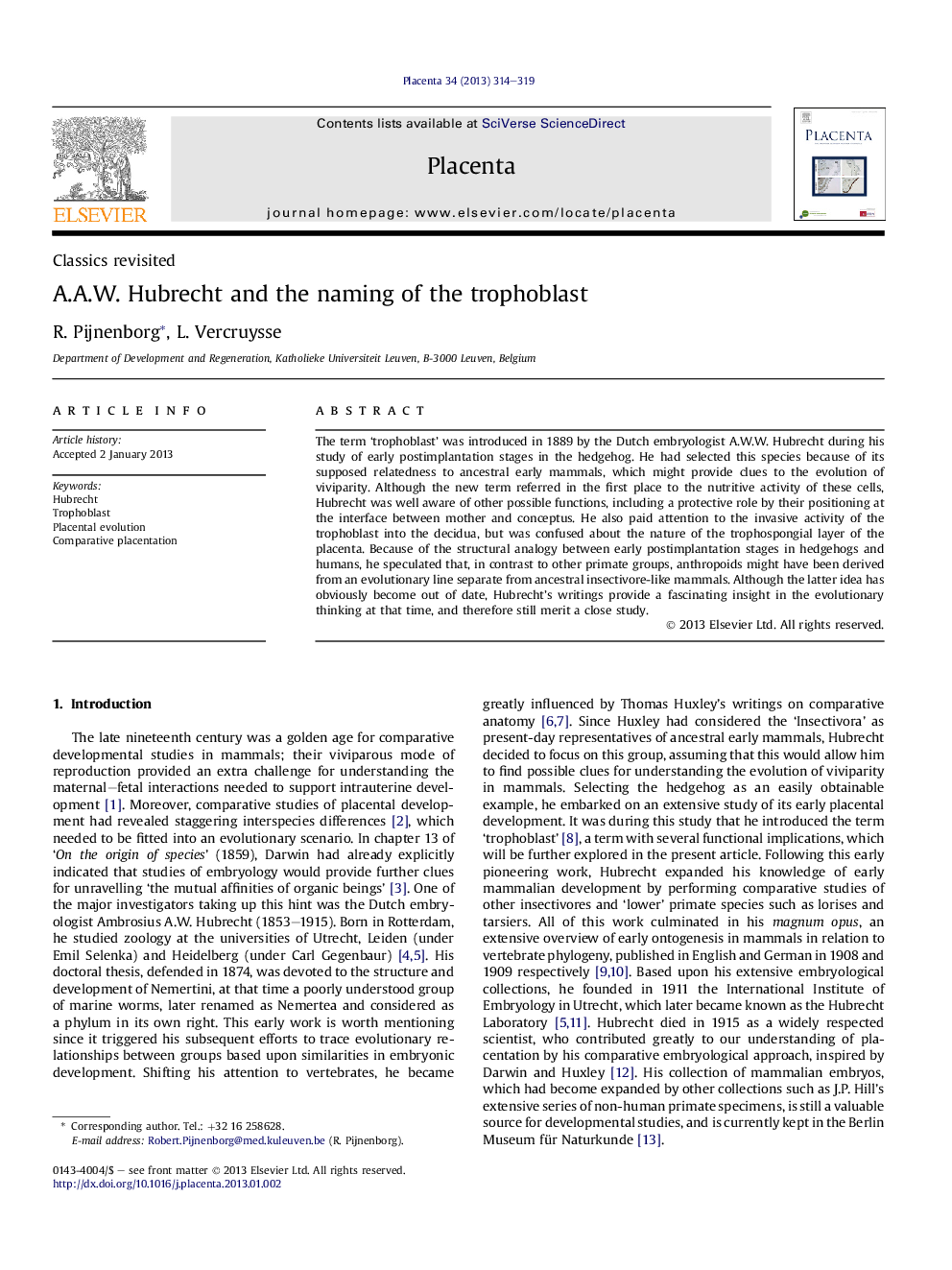| Article ID | Journal | Published Year | Pages | File Type |
|---|---|---|---|---|
| 2789108 | Placenta | 2013 | 6 Pages |
The term ‘trophoblast’ was introduced in 1889 by the Dutch embryologist A.W.W. Hubrecht during his study of early postimplantation stages in the hedgehog. He had selected this species because of its supposed relatedness to ancestral early mammals, which might provide clues to the evolution of viviparity. Although the new term referred in the first place to the nutritive activity of these cells, Hubrecht was well aware of other possible functions, including a protective role by their positioning at the interface between mother and conceptus. He also paid attention to the invasive activity of the trophoblast into the decidua, but was confused about the nature of the trophospongial layer of the placenta. Because of the structural analogy between early postimplantation stages in hedgehogs and humans, he speculated that, in contrast to other primate groups, anthropoids might have been derived from an evolutionary line separate from ancestral insectivore-like mammals. Although the latter idea has obviously become out of date, Hubrecht's writings provide a fascinating insight in the evolutionary thinking at that time, and therefore still merit a close study.
